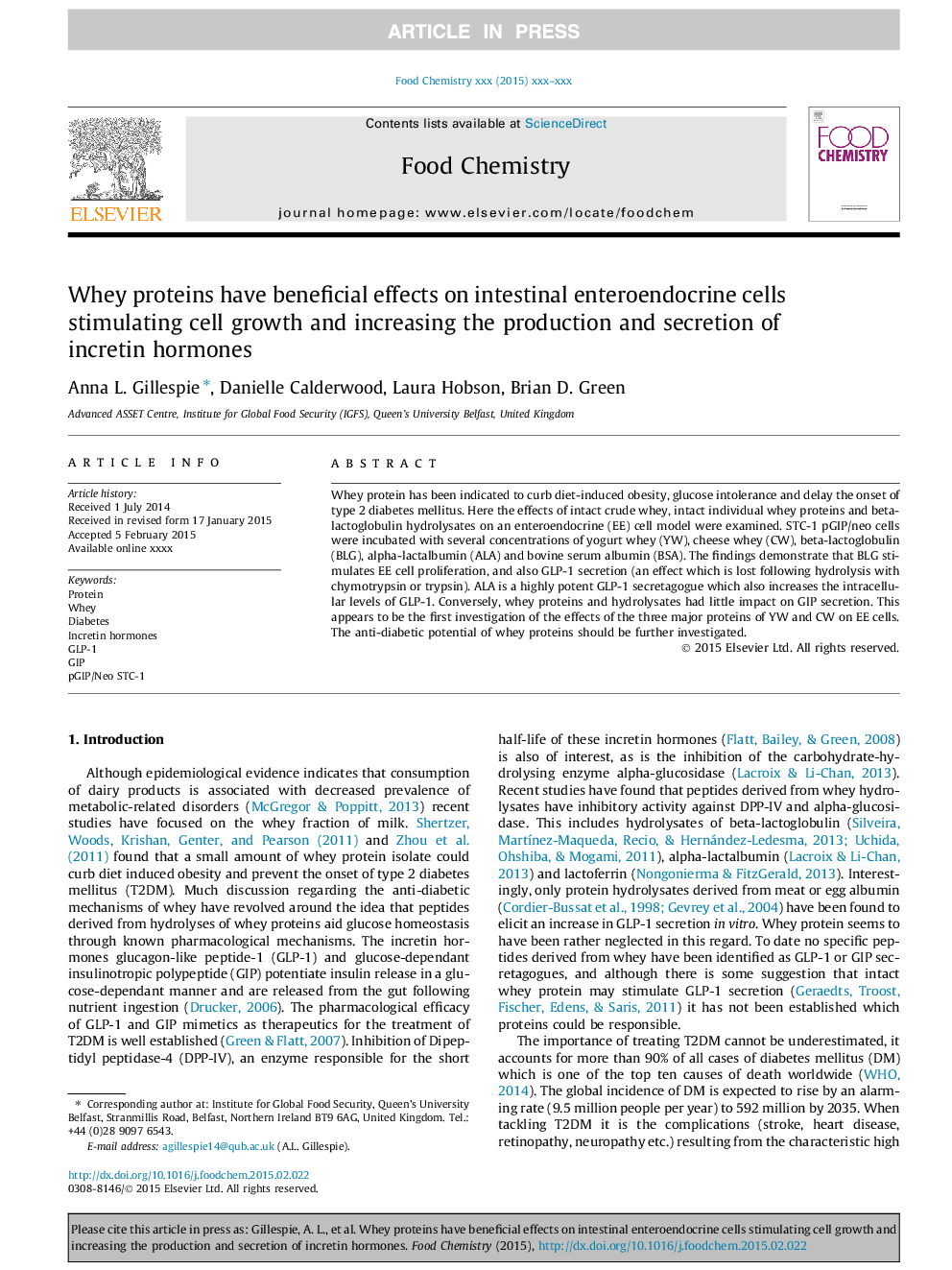| Article ID | Journal | Published Year | Pages | File Type |
|---|---|---|---|---|
| 7590578 | Food Chemistry | 2015 | 9 Pages |
Abstract
Whey protein has been indicated to curb diet-induced obesity, glucose intolerance and delay the onset of type 2 diabetes mellitus. Here the effects of intact crude whey, intact individual whey proteins and beta-lactoglobulin hydrolysates on an enteroendocrine (EE) cell model were examined. STC-1 pGIP/neo cells were incubated with several concentrations of yogurt whey (YW), cheese whey (CW), beta-lactoglobulin (BLG), alpha-lactalbumin (ALA) and bovine serum albumin (BSA). The findings demonstrate that BLG stimulates EE cell proliferation, and also GLP-1 secretion (an effect which is lost following hydrolysis with chymotrypsin or trypsin). ALA is a highly potent GLP-1 secretagogue which also increases the intracellular levels of GLP-1. Conversely, whey proteins and hydrolysates had little impact on GIP secretion. This appears to be the first investigation of the effects of the three major proteins of YW and CW on EE cells. The anti-diabetic potential of whey proteins should be further investigated.
Related Topics
Physical Sciences and Engineering
Chemistry
Analytical Chemistry
Authors
Anna L. Gillespie, Danielle Calderwood, Laura Hobson, Brian D. Green,
